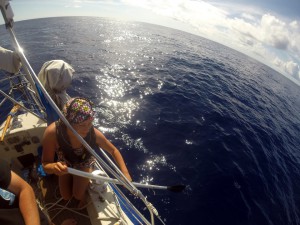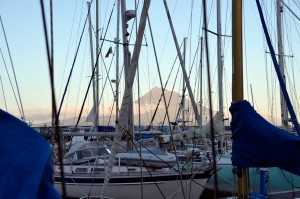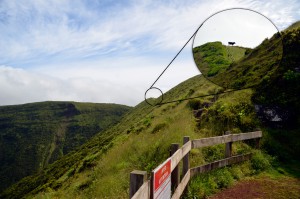I’ve talked about comparing the two crossings from west to east and here we go. Last time I crossed from west to east we had a set date we needed to be in Sweden. Because of that we left early, in April witch is a bit too early. Heading north, we sailed into a tropical wave (developing tropical storm) and had some serious winds. Not having a reliable way of knowing weather and keeping in contact with shore, we had to try to play by ear. Sure, we could get weather faxes in a bad resolution but they were not anything as good as the grib-files I can download now. We had another problem as well, salt. We didn’t realize that we’d accumulated as much salt as we had in our mattresses and pillows. As the temperature dropped, it got more and more damp inside and thus making it even more uncomfortable. Hitting bad weather early meant that we had a faster transition from warm Caribbean to cold North Atlantic and combined with the salt situation it took quite a toll on us. We ended up a bit more north then than we did this time around getting more wind. About two weeks out a tropical storm started to chase us; Ana the same name that the first one that hit the US mainland earlier in May. For a couple of days it looked like Ana would hit us with some serious weather but she didn’t. Being only two we had a lot less continuous sleep and where constantly a bit sluggish from sleep deprivation.
With the weather we’ve had this crossing it’s been a completely different experience. The big storm ended before we even left St. Martin and we’ve stayed south of any big weather patterns. Only down side is that we had to motor quite a bit to get here but I’d rather do that than just drift around in storms. The sat-phone has made communication much easier and we’ve kept contact with not just shore but other sailors that we’ve met during the crossing. Being able to know somewhat to expect all the time is a good feeling. Another good thing that I’ve felt was good was the ais, knowing that there was at least one cargo ship somewhere close all the time made the crossing much more relaxed than the last one. Knowing where they’re heading and how close they will pass is even better. I must say, taking the guesswork out of the small dots on the horizon (that will grow and become mountains of steel) is a good improvement. Conclusions then? Technology helps but they make you depend more on the problems of electricity in boats. It’s sure worth dealing with these problems and I’d gladly do that all again just to have the possibility of a good weather forecast mid ocean and being able to tell my family that I’m fine. That in mind tough I feel that the last time was more exotic, more of a real effort in a strange way. This was a leisure cruise that lasted 26 days and that in itself is a feat but comparing it to the first time it wasn’t something one brags about over a beer with other sailors. Crossing in this way sure was a better crossing but was it a better adventure?



















